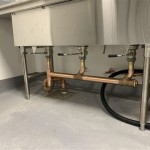Fixing a Sinking Office Chair: A Comprehensive Guide
A sinking office chair can be a significant source of frustration and discomfort. It disrupts posture, reduces productivity, and can even contribute to musculoskeletal issues over time. Rather than immediately replacing the chair, which can be a costly endeavor, exploring repair options is often a more practical and economical initial step. This article provides a detailed guide on diagnosing and addressing the common causes of a sinking office chair.
The core component responsible for height adjustment in most office chairs is a pneumatic cylinder, often referred to as a gas lift or gas spring. This cylinder contains compressed gas, typically nitrogen, which works against a piston to provide the upward force needed to raise the chair. A lever or button activates a valve that releases or restricts the gas flow, allowing the chair to adjust its height. Over time, the seals within this cylinder can degrade, leading to gas leakage. As the gas escapes, the cylinder loses its ability to maintain pressure, causing the chair to sink gradually or abruptly.
The following sections detail the steps involved in diagnosing the issue, gathering necessary tools, and implementing various repair methods, ranging from temporary fixes to more permanent solutions. Each method is presented with clear instructions and considerations for safety and effectiveness.
Diagnosing the Problem and Gathering Tools
Before attempting any repairs, it is crucial to accurately diagnose the cause of the sinking. While a faulty gas cylinder is the most common culprit, other factors, such as a loose or damaged chair mechanism, can sometimes contribute to the problem. Begin by observing the chair's behavior. Does it sink slowly over time, or does it collapse immediately upon being seated? Does the sinking occur regardless of the user's weight? These observations can provide valuable clues about the underlying issue.
Next, visually inspect the gas cylinder and the surrounding mechanism. Look for any signs of damage, such as dents, cracks, or oil leaks. A slight hissing sound when adjusting the chair's height might also indicate a gas leak. Ensure that the lever or button that activates the height adjustment mechanism is functioning correctly and is not obstructed or damaged.
Once the diagnosis points towards a faulty gas cylinder, gather the necessary tools for the repair. These typically include:
*Work Gloves: To protect hands from grease and sharp edges.
*Safety Glasses: To protect eyes from flying debris.
*Rubber Mallet or Hammer: For dislodging the gas cylinder.
*Pipe Wrench: For gripping and twisting the gas cylinder.
*Penetrating Oil (e.g., WD-40): To loosen stubborn connections.
*Measuring Tape: To measure the gas cylinder for replacement.
*New Gas Cylinder (if replacing): Ensure it's compatible with the chair.
*PVC Pipe or Hose Clamps (for temporary fix options): Depending on the chosen method.
Having these tools readily available will streamline the repair process and minimize potential delays.
Temporary Fixes: Stabilizing the Chair Without Replacing the Cylinder
If a replacement gas cylinder is not immediately available or if a more cost-effective solution is desired, several temporary fixes can stabilize the chair and prevent it from sinking. These methods typically involve limiting the cylinder's movement or providing external support to maintain the desired height. However, these are temporary solutions and may not be suitable for long-term use or heavy users.
PVC Pipe Method: This method involves cutting a length of PVC pipe to the desired chair height and fitting it around the exposed cylinder shaft. The pipe acts as a physical barrier, preventing the chair from sinking below that point. To implement this method:
Measure the exposed portion of the gas cylinder shaft when the chair is at the desired height.
Purchase PVC pipe with an inner diameter slightly larger than the cylinder shaft's outer diameter.
Cut the PVC pipe to the measured length.
Carefully slide the PVC pipe over the cylinder shaft, resting it on the chair base.
The PVC pipe should be snug enough to prevent the chair from sinking but loose enough to allow for some adjustment. This method offers a simple and relatively inexpensive way to maintain a fixed chair height.
Hose Clamp Method: This method utilizes hose clamps to restrict the cylinder's movement. By strategically placing hose clamps around the cylinder shaft, the chair's descent can be limited. To implement this method:
Adjust the chair to the desired height.
Place hose clamps around the exposed cylinder shaft, tightening them securely to prevent slippage.
Add additional hose clamps as needed until the chair no longer sinks.
Ensure the hose clamps are tightened evenly to avoid damaging the cylinder. This method offers a more adjustable approach compared to the PVC pipe method, as the height can be fine-tuned by adjusting the position of the hose clamps. However, excessive tightening of the hose clamps can potentially damage the cylinder's surface.
These temporary fixes provide immediate relief and can extend the life of the chair until a more permanent solution, such as replacing the gas cylinder, can be implemented. However, it's essential to monitor the stability of these fixes regularly and re-adjust them as needed.
Replacing the Gas Cylinder: A Permanent Solution
Replacing the faulty gas cylinder is the most reliable and permanent solution for a sinking office chair. This involves removing the old cylinder and installing a new, compatible one. While this process may seem daunting, it can be accomplished with the right tools and careful execution. It's crucial to select a replacement cylinder that matches the dimensions and specifications of the original to ensure proper fit and functionality. Measure the length and diameter of the old cylinder before purchasing a replacement.
Removing the Old Gas Cylinder:
Turn the chair upside down, providing access to the cylinder's base.
Apply penetrating oil to the points where the cylinder connects to the chair base and the seat mechanism. Allow the oil to soak for several minutes to loosen any corrosion or binding.
Using a rubber mallet or hammer, gently tap around the base of the cylinder to dislodge it from the chair base. Avoid excessive force, as this can damage the base.
If the cylinder is particularly stubborn, use a pipe wrench to grip the cylinder and twist it gently while simultaneously tapping with the mallet. Continue until the cylinder is free from the base.
Once the cylinder is detached from the base, repeat the process to detach it from the seat mechanism. Exercise caution when working near the seat mechanism to avoid damaging any internal components.
Installing the New Gas Cylinder:
Ensure the new gas cylinder is clean and free from any debris.
Insert the top of the cylinder into the seat mechanism, ensuring it is securely seated.
Insert the bottom of the cylinder into the chair base, ensuring it is fully inserted and locked in place.
Apply pressure to the seat while pressing down on the cylinder to ensure a secure connection.
Turn the chair upright and test the height adjustment mechanism to ensure it is functioning correctly.
If the new cylinder does not fit snugly into the chair base or seat mechanism, consider using shims or spacers to provide a more secure fit. However, avoid using excessive force to avoid damaging the cylinder or the chair components.
Replacing the gas cylinder requires patience and careful execution. If you are uncomfortable with any of these steps, consider seeking assistance from a qualified furniture repair technician.
Once the repair is complete, thoroughly inspect the chair to ensure all components are securely fastened and that the height adjustment mechanism is functioning smoothly. Regular maintenance, such as periodically tightening screws and lubricating moving parts, can help prolong the life of your office chair and prevent future issues.

How To Fix A Sinking Desk Chair 11 Steps With Pictures

How To Fix A Sinking Desk Chair 11 Steps With Pictures

Diy How To Fix Sinking Chair In Under 5 Minutes Youtube

How To Fix A Sinking Desk Chair 11 Steps With Pictures

Fixing A Sinking Office Chair Why Does My Keep Going Down

How To Fix Office Chair From Sinking Replace Gas Cylinder

How To Fix A Sinking Desk Chair 11 Steps With Pictures

Office Chair Hero Fix Attaches Clamps To Large Cylinder Piston Stops Your Chairs Sinking When Computer Hydraulic Lift Has No Gas Stop Replacement

Computer Chair Sinking Problem Easy Fix

Diy Office Chair Repair How To Fix A Sinking Seat







